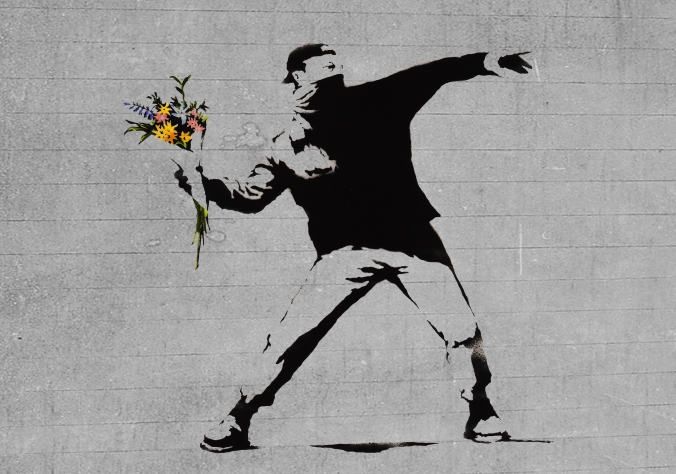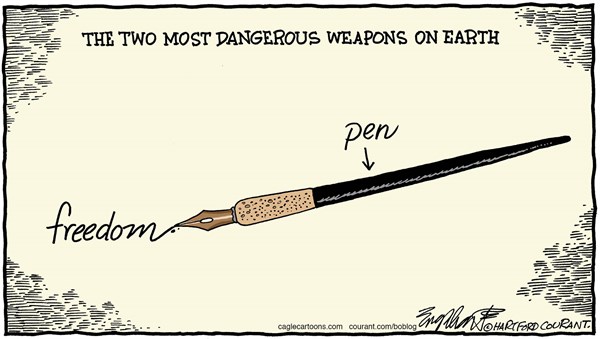The design industry has become a factory for corporation. Some people believe that the design world has begun to have solely corporate motives. We can see these views in the manifestos by Ken Garland (1964), Tibor Kalman (1998) and Adbusters (2000). These manifestos focus on trying to develop design into something more than just a corporate machine. In Garland's manifesto First Things First, he is gently pushing practitioners towards making art relevant, 'Nor do we want to take any of the fun out of life...We hope that our society will tire of gimmick merchants'. Whereas in Adbuster's recreation of Garland's manifesto in 2000, their tone of voice is much more urgent 'There are pursuits more worthy of our problem-solving skills.' Both of these manifestos talk about designers using their skills for menial tasks. In Kalman's manifesto Fuck Committees (1998) he goes into more detail, 'Magazine editors have lost their editorial independence, and work for committees of publishers (who work for committees of advertisers)'. Here, Kalman is saying that there are no more independent designers, just people who work for other people. These themes of independence come through in all manifestos, with the manifestos striving to push towards a more independent design future.
A PARAGRAPH THAT SHOWS ANALYSIS

This image is an advert for the company Heinz for tomato ketchup. It features a ketchup bottle shaped from real tomatoes, obviously insinuating that their product is made from real produce. The line 'No one grows Ketchup like Heinz' is supposed to be a play on the fact that they're growing tomatoes, not ketchup. Some may say that this advert wrongly insinuates that Heinz is just made from real tomatoes, it forgets to put in all the sugar and additives that they also include in their products. This image is representative of what the manifestos from Garland (1964), Kalman (1998) and Adbusters (2000) are saying. Designers use their skills to sell mundane products. Although the advert is clever, it doesn't show anything of the graphic designer who was behind it; it doesn't show their personality or their opinion. It's just a tomato ketchup bottle. As Adbusters said in their 2000 manifesto First Things First, 'Commercial work has always paid the bills, but many graphic designers have now let it become, in large measure, what graphic designers do'.
A PARAGRAPH THAT SHOWS EVALUATION
Kalman's manifesto Fuck Committees (1998) is an outline of the issues that many designers face in the modern world. He focuses on the loss of identity that we see in modern design and the commercialization of a practice that once flourished. Kalman doesn't just focus on one area of design but goes on to compare even the likes of magazine editors and tv scripts. He mentions the loss of individualization 'All cars look the same. Architectural decisions are made by accountants. Ads are stupid. Theatre is dead' His seemingly aggressive tone insinuates his passion in this issue, forcing the reader to believe that things must change. He states 'culture and design are not about fatter wallets, but about creating a future'. Whilst the things that Kalman says are passionate and well focused, society can not ignore the need for commercial design. Kalman is very passionate about abolishing this trade that has become so crucial to the financial stability of many designers. In Garland's manifesto First Things First he says 'We do not advocate the abolition of high pressure consumer advertising.' Garland is more focused on people, whilst also making enough money to live, to design with freedom of choice. This is a more feasible goal for modern designers, use commercial design as a means of living, and use your talent for independence.
A PARAGRAPH THAT SHOWS YOUR ABILITY TO PARAPHRASE, SUMMARISE OR PRODUCE A 'PRECIS' OF ONE OF THE TEXTS
In Garland's manifesto First Things First (1964), Garland is pushing forward the notion for designers to prioritise independent design rather than relying on commercial design for means of living. He is suggesting that for many, commercial design has become a way of life and the only design that many focus on, which he names 'trivial purposes'. Garland does not want to abolish high pressure consumer advertising, but instead for designers to change their priorities to something more worthwhile. Use commercial design to pay the bills, and also use your skill to produce things more worthwhile. He is hoping that as society progresses, the need for graphic design will become more worthwhile and not just for menial advertising. For Garland saying that he doesn't want to abolish consumer advertising for designers, it makes his manifesto more feasible. He understands that for many, this is a way for them to keep bread on the table. But he still pushes that thought into people's mind that there are more worthwhile purposes for them to be using their skills on.
Adbusters. 2000. FIRST THINGS FIRST 2000. [ONLINE] Available at:http://www.manifestoproject.it/adbusters/. [Accessed 30 December 15].
Ken Garland. 1964. FIRST THINGS FIRST. [ONLINE] Available at: http://www.manifestoproject.it/ken-garland/. [Accessed 30 December 15].
Tibor Kalman. 1998. FUCK COMMITTEES. [ONLINE] Available at: http://www.manifestoproject.it/fuck-committees/. [Accessed 30 December 15].
















